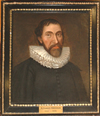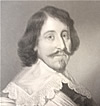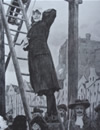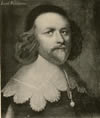 |
|
Alexander Henderson was already dead, but soldiers were sent to shoot at his gravestone. |
 |
|
Samuel Rutherford, one of the most loved Covenanter preachers and writers, was summoned to appear before Parliament for treason. However he died in a bed a few days later. He said to the officers who came to get him, ‘Tell them that I have a summons already from a superior Judge’. |
 |
|
Archibald Campbell, the Covenanting noble who had crowned king Charles II in 1651, was beheaded. He said ‘I set the crown on the king’s head – he hastens me to a greater crown’. |
 |
|
James Guthrie, another preacher, was executed by hanging in Edinburgh. His last words before he died were ‘The Covenants, the Covenants shall yet be Scotland's reviving’. His head was taken put over one of the city gates as a warning to others. It stayed there for the next 28 years, during which time 18,000 people would suffer death or extreme persecution for the cause of Christ. |
 |
|
Archibald Johnston of Wariston, who had helped write the National Covenant escaped to France, but in 1663 he was hunted down, brought back to Scotland, and hanged in Edinburgh |
|
Charles II called the ‘Drunken Parliament’ which met for the first time on 1 January 1661. It passed an oath of allegiance, in which people could be forced to say that they recognised the king as having complete power over everything (which included the church). In March it passed the Recissory Act which abolished all the acts of parliament passed since 1640, including many in favour of Reformation and Presbyterianism. The next year, parliament declared that the covenants were unlawful. Despite the fact that he had signed the covenants himself, Charles II had them publicly burnt.
Further Reading:
J. G. Vos, The Scottish Covenanters (Edinburgh, 1998 [1940]), pp 75-82.
John Howie, ‘Samuel Rutherford’ in The Scots Worthies (Edinburgh, 2001 [1775]), pp 232-42
John Howie, ‘Archibald Campbell, Marquis of Arygll’ in The Scots Worthies (Edinburgh, 2001 [1775]), pp 242-57.
John Howie, ‘James Guthrie’ in The Scots Worthies (Edinburgh, 2001 [1775]), pp 257-68.
Records of the Parliament of Scotland
DSCHT: Campbell, Archibald; Charles II; Guthrie, James; Rutherford, Samuel
John Coffey, ‘Rutherford, Samuel (c.1600–1661)’, Oxford Dictionary of National Biography, Oxford University Press, Sept 2004; online edn, Oct 2009
K. D. Holfelder, ‘Guthrie, James (c.1612–1661)’, Oxford Dictionary of National Biography, Oxford University Press, 2004
David Stevenson, ‘Campbell, Archibald, marquess of Argyll (1605x7–1661)’, Oxford Dictionary of National Biography, Oxford University Press, Sept 2004; online edn, May 2006]
Paul Seaward, ‘Charles II (1630–1685)’, Oxford Dictionary of National Biography, Oxford University Press, Sept 2004; online edn, Jan 2008
|